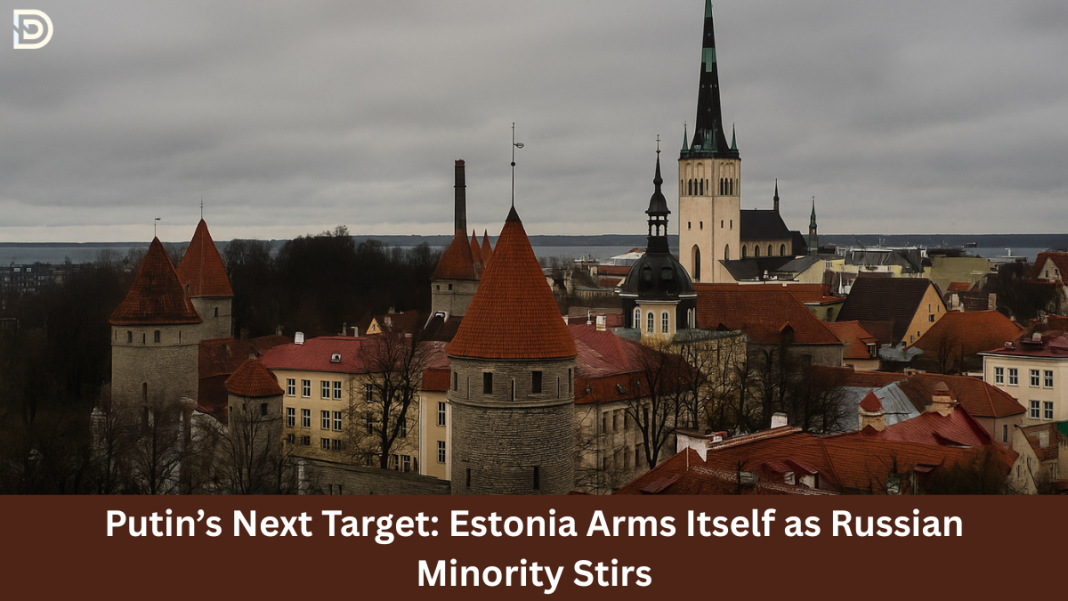On a cloudy April afternoon in Tallinn, Estonia’s capital, Berit Osula sat in a salon getting her nails done.
Growing Fear in Estonia
She joked that gun oil was bad for her nail polish. But Osula is not just a regular mom of two—she is a corporal in Estonia’s defence league. Like 30,000 other Estonians, she volunteers to protect her country in case of war. Many were moved to join after watching Russia invade Ukraine in 2022.
Estonia is a small nation with just 1.4 million people. Its professional army is only about 7,000 strong, but its volunteer force is much larger. Osula trains regularly, sometimes running long distances while carrying a heavy machine gun and wearing body armor. Even though her family misses her at home, they understand why she trains. She wants to be ready if war comes to Estonia.
The fear is not without reason. Estonia shares a border with Russia and has a long, painful history of occupation. Russia took over the country during World War II and again during the Soviet era. Many Estonians were killed or sent to labor camps in Siberia. After the Soviet Union collapsed, Estonia regained its independence in 1991 and joined both the EU and NATO.
Estonia is flat and has little natural protection from invasion. Politicians have called this a lack of “strategic depth.” This makes the country feel especially vulnerable, especially now that Russia has become more aggressive. Since the Ukraine war began, over 4,000 Estonians have joined the defence league. NATO has also sent more than 2,000 troops to Estonia.
Tensions in Russian-Speaking Areas
The city of Narva sits right on the border with Russia. A river divides the Estonian and Russian sides, with old fortresses facing each other just 100 meters apart. Most of Narva’s residents are Russian-speaking. Even though they live in Estonia, many still watch Russian TV and feel connected to Russia’s past. Some even gather each year to watch Russia’s Victory Day parade broadcast from across the river.
This connection worries many Estonians. During World War II, Estonia was caught between Nazi Germany and the Soviet Union. Some Estonians fought for the Soviets, others for the Nazis. In museums, uniforms from both sides are shown—but the mannequins are blindfolded so they can face each other. This shows the pain and confusion from that time.
Narva was destroyed by Soviet bombing in 1944, and the Estonian population was not allowed to return. Instead, Russians were brought in to work in factories. Today, about a quarter of Tallinn’s population and many in other cities are also Russian-speaking. Some remember Soviet times with fondness, while others feel left out of modern Estonian life.
Estonia Pushes Back
Estonian officials have tried to make sure Russian influence doesn’t grow. They have banned Russian TV, stopped issuing visas to Russian citizens, and removed Soviet-era monuments. Russian-language schools are being phased out, and by 2030, all education is expected to be in Estonian. But in places like Narva, there aren’t enough Estonian-speaking teachers.
Ghost Ship Jaguar Defies Estonia in Baltic Sea, Russian Jet Shields Tanker from Interception
People like Maria Smorzhevskikh-Smirnova, who runs the Narva museum, have faced threats for speaking out. She hung a banner on the fortress calling Putin a “war criminal.” In response, Russia issued an arrest warrant for her. Drones from the Russian side have also flown near the museum, and there have been reports of sabotage. In one case, the border buoys in the river were removed at night.
Some Russians in Estonia feel like outsiders. They say they are judged for speaking Russian or having Russian names. The Estonian government requires Russians to pass a language test to get full citizenship. Those who don’t pass are given grey passports, which limit their rights. About 80,000 Russians still hold Russian passports. They were once allowed to vote in local elections, but that right will end after this year.
Strengthening Defenses and Standing Guard
In the pine forests east of Tallinn, Osula and her fellow volunteers train alongside the regular army. They test American-made mortars and practice hiding from drones. Estonia has started to build a stronger defense system. A new NATO base is under construction, and for the first time, Estonian soldiers will be stationed in Narva. The country will also build a new explosives factory.
Estonia has increased its defense budget to 5.4% of its GDP, the highest in NATO. At a ceremony in April, six new HIMARS missile launchers arrived from the U.S. Estonian soldiers wore patches of Ukraine’s flag alongside their own. The government is also preparing civilian buildings—like gas stations and supermarkets—to work during crises. Some homes are stocking up on fuel, water, and food.
Families like the Osulas are planning what to do if war comes. Their house has no basement, so they have chosen another home nearby as their emergency shelter. Their 13-year-old daughter, Liisbeth, has joined the junior defense league and is learning to speak Russian so she can understand her classmates better. The family remains alert, aware of the danger but carrying on with daily life.
Estonians are reminded of Ukraine’s suffering every day. Many wonder if they could be next. The memories of the past and the signs of the present have made them prepare in silence, their worry hidden but real. As Osula said after training, “We have a Plan A and a Plan B.” Just in case.

